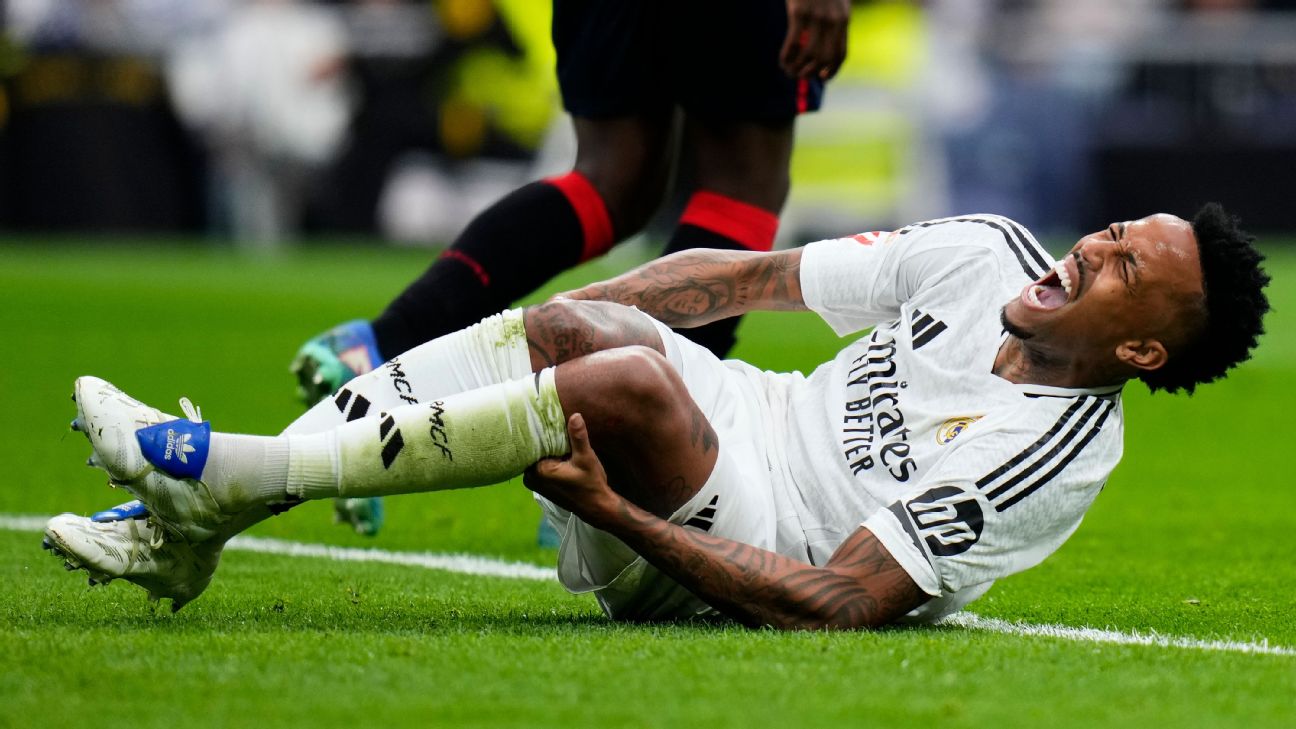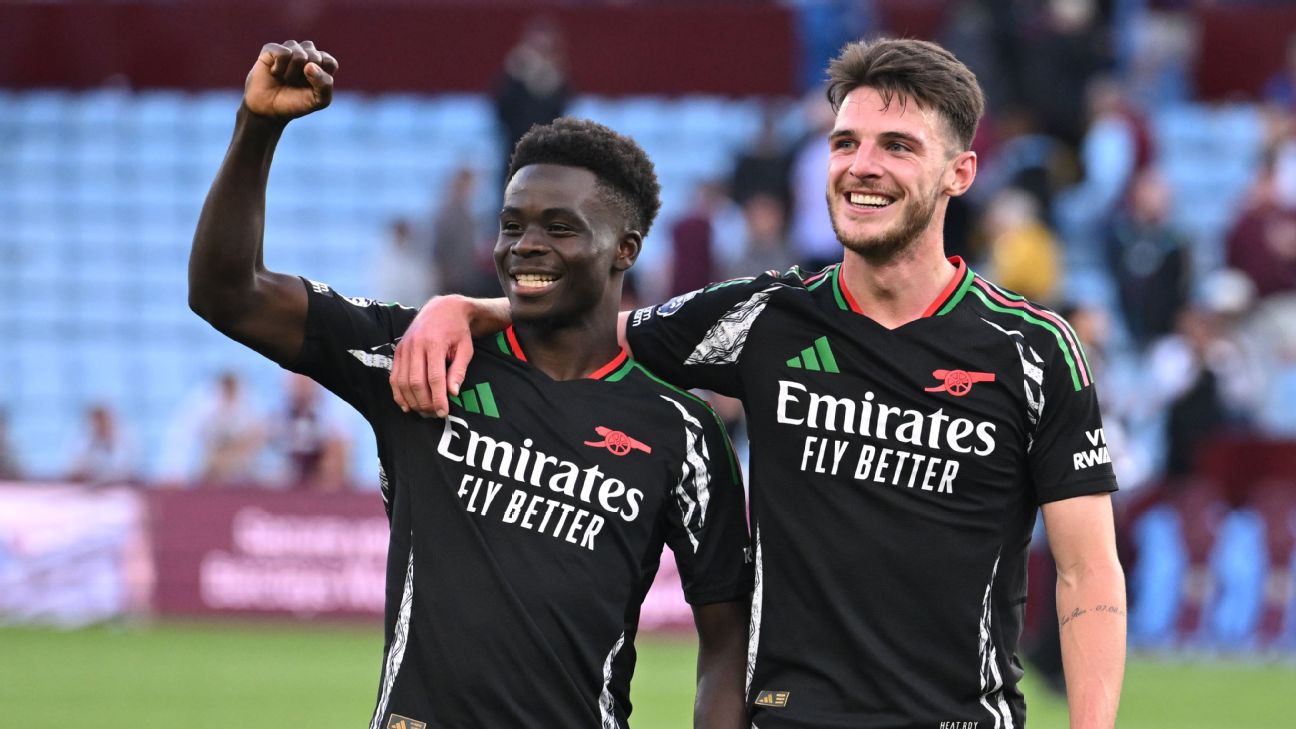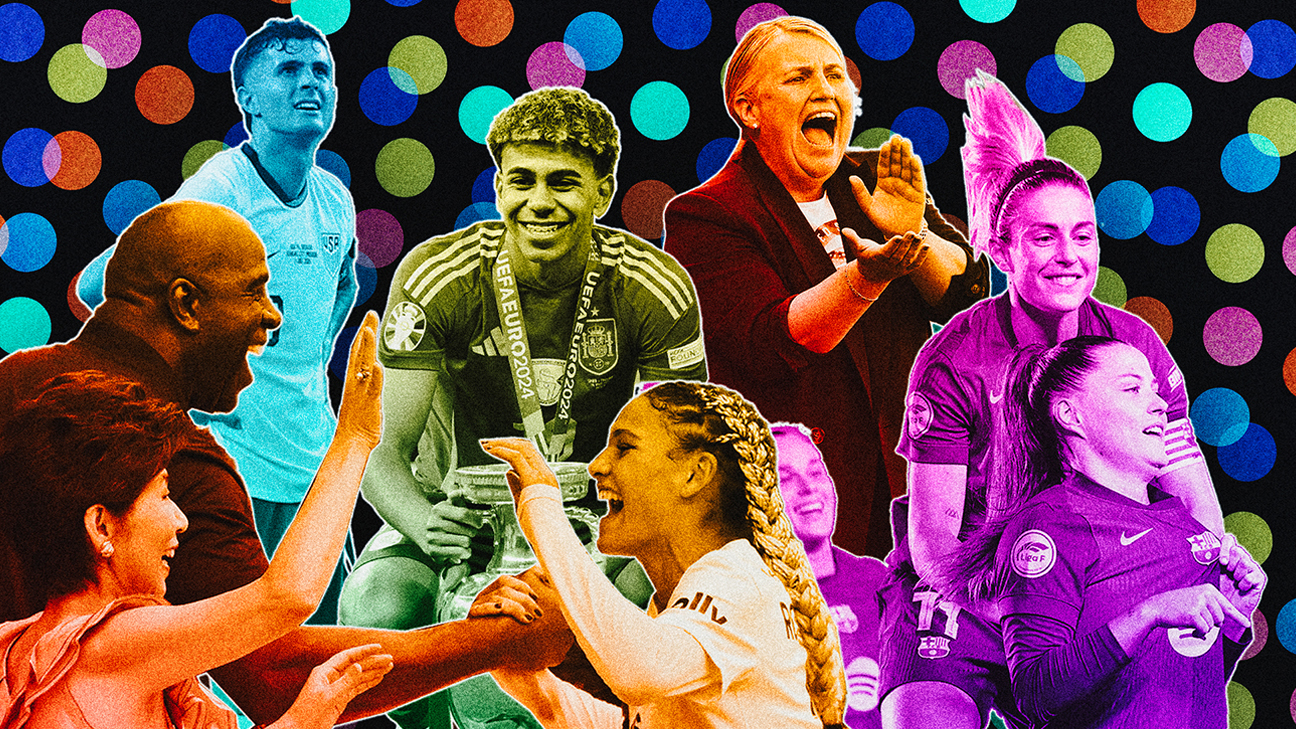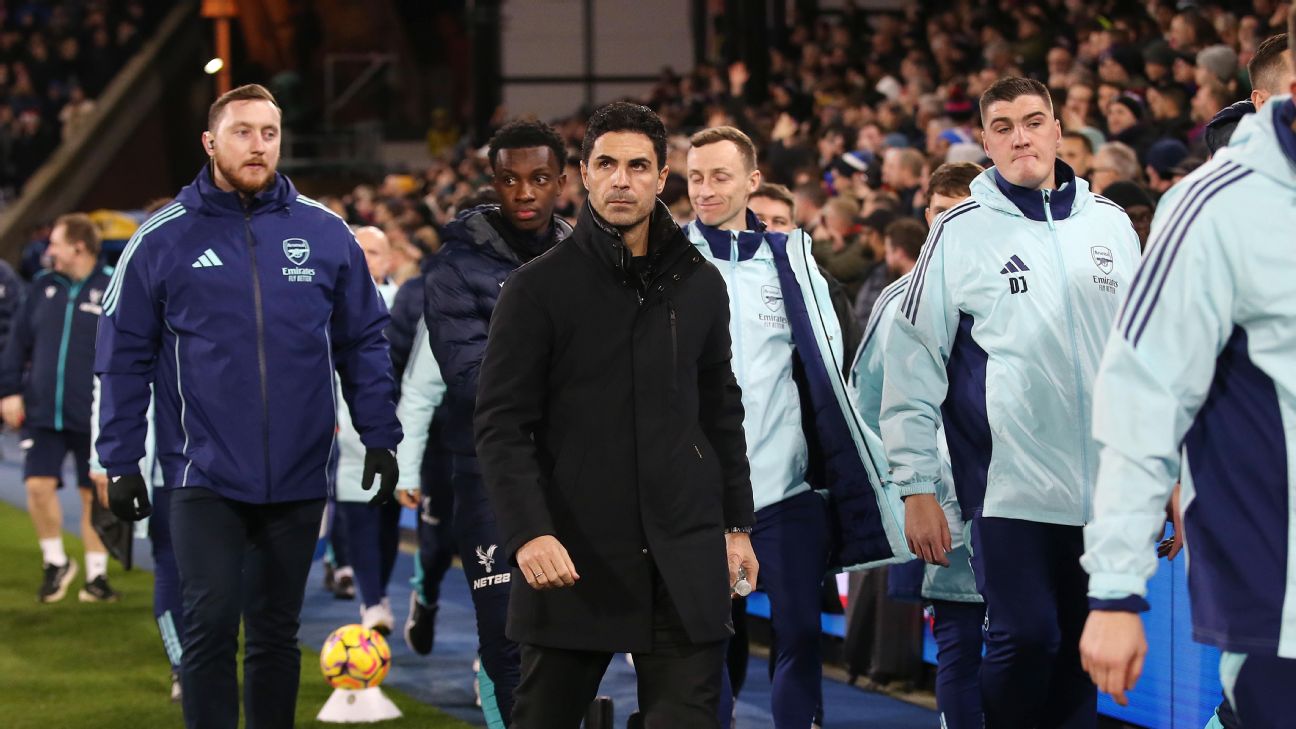Suddenly, we really do have a title race in LaLiga this season, but that fact has come at a high cost for reigning champions Real Madrid.
Thanks to Barcelona’s clumsy 1-0 defeat in San Sebastián to Real Sociedad, the Spanish champions are now only six points behind their rivals with a game in hand: it’s an admirable way to end a fortnight that saw them thrashed by Hansi Flick’s team in the Clásico, and then humiliated by AC Milan at home in the Champions League. Even staunch Madridistas will be scratching their head and thinking: “How did we manage this?” But there’s a bill to be paid and it’s one that will turn a magnifying glass on one of the club’s strangest and most disappointing weaknesses.
First, the bad news. Éder Militão’s knee ligament injury, his second in 15 months, means he won’t play again this season. It’s bad enough for the club and is heartbreaking for the Brazilian, but when you add it to the litany of similar injuries Los Blancos have recently suffered, it’s evident there is a serious problem.
He, Thibaut Courtois and David Alaba were all hit by pretty much identical knee damage last season and while the Brazil and Belgium internationals returned in time to make Madrid Spanish and European champions, the Austria defender is still out hurt, and his projected return remains elusive. Add to that the dreadful loss of Dani Carvajal already this season — the veteran full-back won’t play again until 2025-26 — plus an identical injury to excellent 17-year-old centre-half Joan Martínez, and you would understand if club president Florentino Pérez has instituted a full investigation as to why this is such a repetitive and damaging trend.
I don’t propose to dwell on this for long right now, because it’s a delicate area in which evidentiary proof is nearly impossible to produce, but it was interesting to hear Álvaro Benítez, ex-Madrid youth and first-team midfielder — plus their one-time academy coach — on the “Carrusel Deportivo” radio show this weekend, suggesting that the Bernabéu playing surface be re-examined to either identify or eliminate it as a contributory factor.
Right in the middle of renovating their modern and impressive football edifice, Madrid were warned by then-head of pitch maintenance, Paul Burgess, that they had lost focus on how important that part of the project was. He walked away from the club, convinced that it was sewing the seeds of future problems in how they move and store the pitch underground.
Benitez’s remark draws attention to the idea that it’s worth re-examining whether there is any connection between the surface Madrid play on and this sudden outbreak of devastating injuries. The answer might feasibly be a resounding “NO” — but, as I say, this is an immensely delicate area where perception can often be as important as fact, meaning the players might already be seeking explanations and may settle upon suppositions that are no more than “feelings.”
It really is vital that Madrid find a way to prevent such regular damage to their stars not only for the fans, the club and the manager, but specifically for their star players. Football’s governing bodies finally accepting that inflating every single tournament, club or international, is detrimental to the well-being of elite players would be a start; right now, the players are unquestionably asked to do too much too often.
Back to Madrid. Losing centrally important first-team players during the earlier parts of the season means that they are already entitled under LaLiga rules to sign replacements outside the transfer window if any such potential replacement meets the champions’ needs. During their 4-0 win over Osasuna this weekend, Carlo Ancelotti’s team give a hint of what, in reality, they should be able to do regularly, but usually don’t. That is promote from within their own youth system that, long ago, was proudly named “La Fabrica” (“The Factory”).
The “hint” in question is Raúl Asencio, who has risen through the ranks of Madrid’s academy system and who contributed an assist on his first-team debut this weekend, having come on to replace Militão. Martínez would probably have been first in line as a replacement central defender had he not suffered the horrible injury that’ll cost him a year to recover from, and it’s quite evident that junior right-back Jesús Fortea is going to debut soon, hopefully able to fulfill what looks like immense promise.
This is the point I mentioned: the magnifying glass being turned upon the fact that this mighty, dominant, proud club hasn’t managed to establish one of their own academy players in the first team for nearly 10 years.
Alex Kirkland reacts to the injuries suffered by Rodrygo & Éder Militão in Real Madrid’s first half against Osasuna.
When it last happened, the sensation was that there would be a steady flow, not a trickle, of upwardly mobile talent and that the enormous history of home-trained, club-loyal youngsters establishing themselves and winning trophies for Los Blancos would continue uninterrupted. That’s because there was the sequential emergence of Nacho Fernández, Carvajal and Lucas Vázquez in the first team within a short space of time between 2013 and 2015.
Between them they have over 1,100 first-team appearances for Madrid and 17 Champions League winners’ medals. Yet while there have been Madrid academy debutants over the decade-and-a-bit since these three extraordinary characters came through, not one of those has managed to cement a place in the Real Madrid firmament. And just before you protest: neither Vinícius Junior nor Rodrygo — both of whom played for Real Madrid Castilla — count because each of them had made around 50 appearances for the first teams of Flamengo and Santos respectively before moving to Spain.
Madrid’s failure in this aspect has actually been LaLiga’s nourishment. The general flow is from the first-class Valdebebas training centre, out near Madrid airport, to other teams who benefit from the excellence generated from La Fabrica, but then not used by Los Blancos‘ first team. In the meantime, their rivals — most noticeably Barcelona, Real Sociedad and Athletic Club — continuously develop, and then profit from, kids who have been long-established in their various academies and who then go on to win trophies and become first team stalwarts.
It’s a fair retort from Madridistas who simply don’t care about their “Mirlos” (the nickname for promising Real Madrid youth cadets) not making it into their first team and say that this is a club with six Champions League titles during those years since the last academy graduates became regulars.
If you can buy the best and then win the best trophy repeatedly could the question become: “Who really needs an academy?” But this wasn’t the original idea of president Pérez when he launched his promised Galactico era in order to win the election back in 2000.
The motto was that Madrid would sign “Zidanes” (aka stars of Zinedine Zidane’s prodigious talent and profile) but produce “Pavóns.” But poor old Francisco Pavón, then the emblem of their youth system, wasn’t a huge Los Blancos‘ success, nor was he a template for the club’s La Fábrica template in ensuing years.
Luis García reacts to Vinícius Júnior’s hat trick performance for Real Madrid against Osasuna.
Now the spotlight is on whether or not Madrid’s academy can supply a clutch of footballers able to bail them out of their horrible injury problems this season and then go on to become strong, successful regulars for this club. And having floated the question about whether a youth system is irrelevant to a club that’s so financially muscular and regularly buys the best young players rather than produces them, it’s time for the killer blow.
The mere mention of Carvajal, Nacho and Lucas — all forged in the white-heat of the youth system, all die-hard Madridistas and all hugely successful — can be augmented by pointing out that Madrid’s greatest goalkeeper, World Cup-winning Iker Casillas, was cut from the same cloth and their legendary striker, now Castilla coach, Raúl González, was another who came through the in-house system before making himself an all-time legend.
One of the most famous eras in this club’s entire history is when the La Quinta del Buitre emerged — a quintet of extraordinary footballers who thrilled the fans, lifted trophies and provided a current club vice president, Emilio Butragueño. All home-grown, all still talked about with loving reverence.
This is a club that’s has been able to find its pride — and its well-merited arrogance — in other directions over the last 10-plus years, but that has never erased the fact that the very healthiest, very strongest Real Madrid is one that’s at least partially powered by men who have grown up in “The Factory,” who understand the pulse of the fan base and who would give a limb in order that Madrid beat their closest rivals and lift great trophies. Now we’re entering a period when we are about to discover whether or not any such imperious figures have been prepared, and if they can end the drought by establishing themselves in Real Madrid’s first team.



